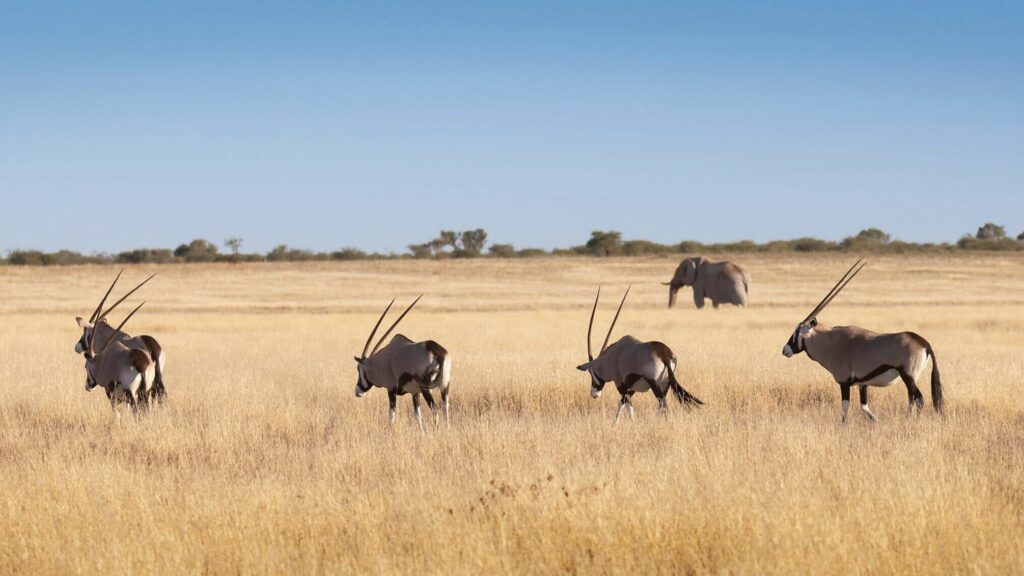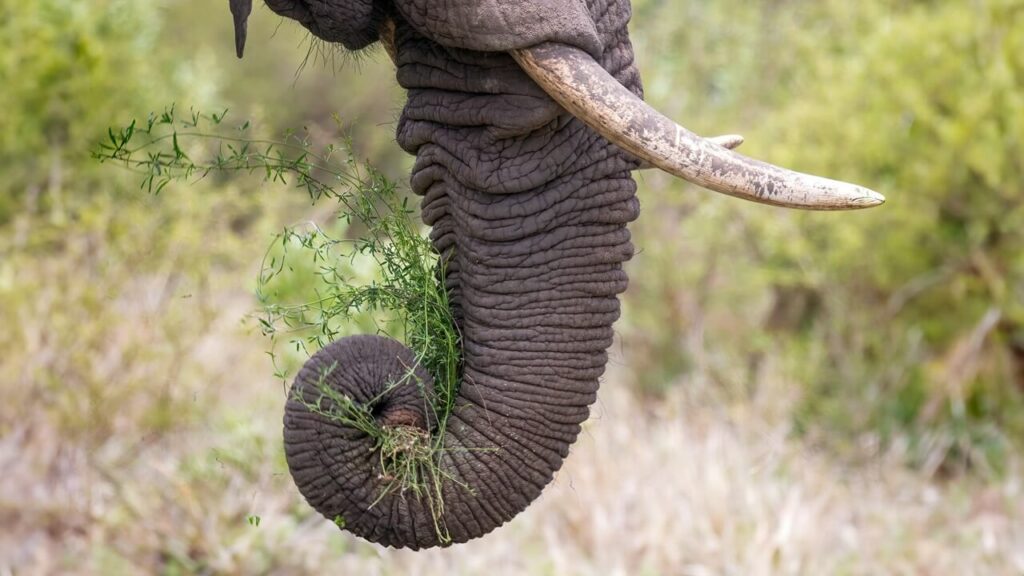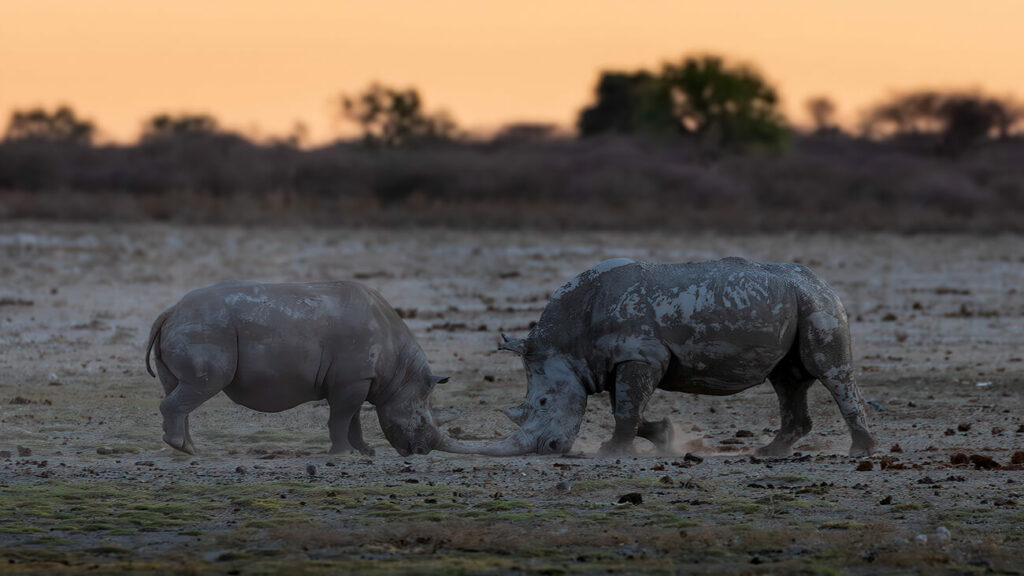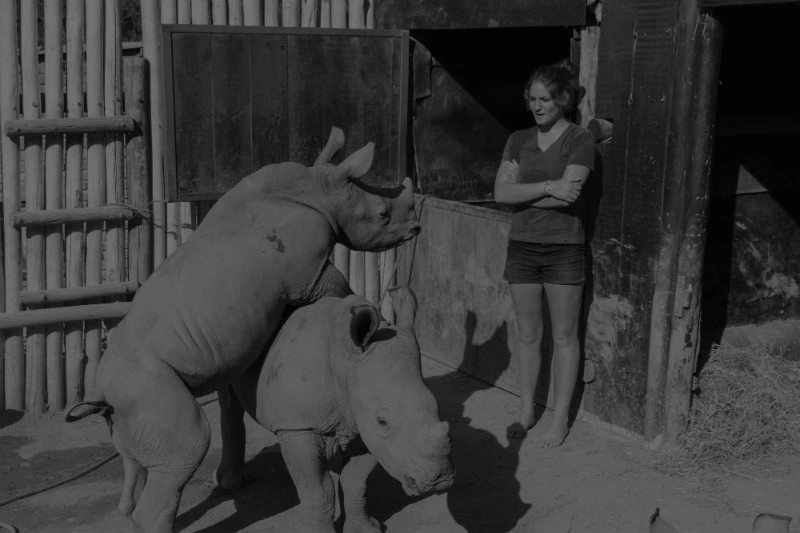White Rhinoceros – Africa’s Gentle Giants
White Rhinoceros – An Introduction
Southern White rhinoceros (Ceratotherium simum) are also known as the square-lipped rhino. These are a large species of rhinoceros that are native to Africa. They are one of the two species of white rhino, while the other being the more critically endangered northern white rhino. White rhinos are known for their distinctive square-shaped lips and massive bodies. These and are the second largest land mammal in the world, after the elephant. It will always be a privilege to volunteer with white rhinos as these are magnificent beasts.
Africa’s Gentle Giants with a Surprising Name
The white rhinoceros, with their prehistoric appearance and gentle nature, are iconic symbols of African wildlife. Despite their name, they’re actually grey! This misnomer comes from an old misinterpretation of the Afrikaans word “wyd” (meaning “wide”) referring to their broad, square lips perfectly adapted for grazing. Another prevalent theory is that they were dubbed “White” as by William Burchell after hunting one in the Kuruman region of South Africa, an area littered with Calcrete pans and as we are accustomed to here, white rhinos are often very white from rolling/bathing on the pans.
Quickfire White Rhinoceros Facts:
- Weight: Adult white rhinoceros males can weigh up to 2,300kg (5,070lbs), and females can weigh up to 1,700kg (3.750lbs)
- Speed: White rhinoceros can run at speeds of up to 50 km/h (31 mph) Diet: White rhinos are herbivores and primarily feed on grasses, while some individuals known to consume browse. White rhinos are bulk grazers.
- Threats: White rhinoceros are threatened by habitat loss and poaching for their horns, both are happening at alarming rates.
- Social behavior: White rhinoceros are the only rhinos known to be social animals and are often seen in groups, known as a crash.
- Reproduction: White rhinoceros have a gestation period of 16 and give birth to a single calf at a time weighing 40–65 kg (88–143lbs).
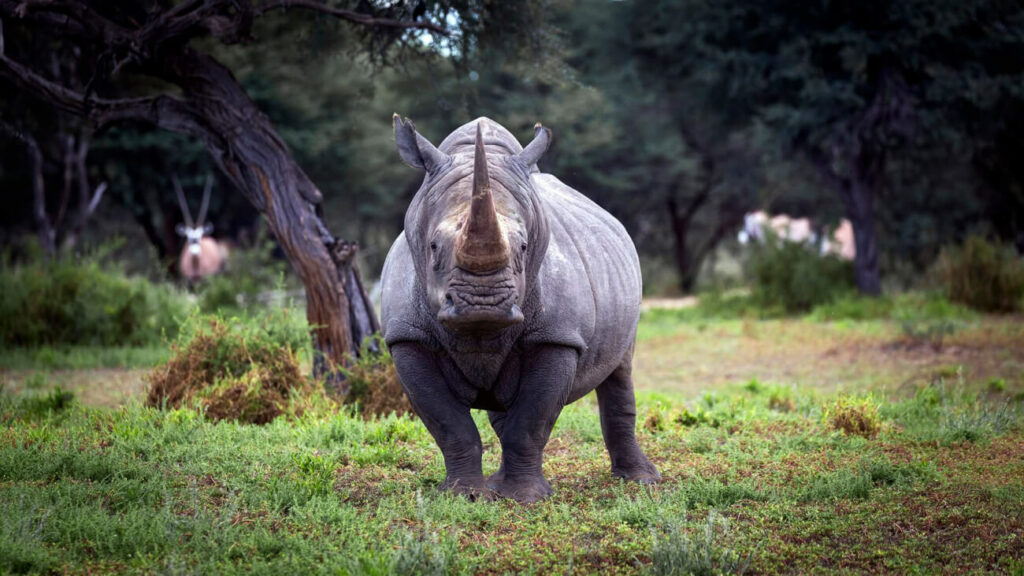
Huge white rhinoceros bull seen at Khamab Kalahari Reserve
Taxonomy and Origins: Meet the Rhino Family
White rhinoceros (Ceratotherium simum) are one of five living rhinoceros species and belong to the family Rhinocerotidae. Their closest relative is the critically endangered northern white rhino. Fossil records suggest rhinos have roamed the earth for millions of years! They are living links to our planet’s ancient past!
Size Matters: The Second Largest Land Mammal
White rhinoceros are truly massive creatures. Males can weigh up to a whopping 2,300 kg (5,070 lbs), with females reaching 1,700 kg (3,750 lbs). They stand up to 1.8 meters (6 feet) tall at the shoulder. On land, only elephants surpass them in size!
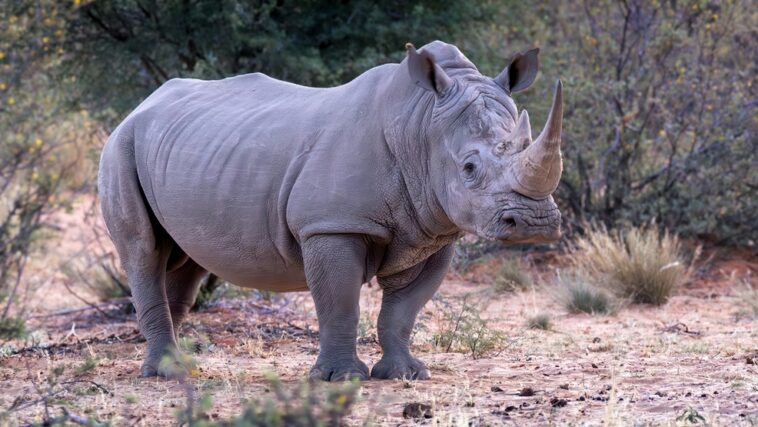
White White rhino at a waterhole in Khamab Kalahari Reserve
Built for Grazing, Not Racing
While incredibly powerful, white rhinos aren’t built for long-distance running. Their top speed is around 50 km/h (31 mph), but they tire quickly. Instead, they rely on their size and impressive horns for defense. Their distinctive wide, square lips are perfectly designed for munching on grasses, their primary food source.
The Surprisingly Social Rhino
White rhino’s defy the “solitary rhino” stereotype! They often form groups called “crashes,” typically consisting of females, their calves, and sometimes a dominant bull. Young males may also form bachelor groups. While adult males mark and defend territories, female territories can overlap quite a bit, allowing for important social interactions.
Rhino Babies: A Long Wait and a Strong Bond
A white rhino’s pregnancy lasts a remarkable 16 months! She gives birth to a single calf that weighs 40-65 kg (88-143 lbs). Calves stay close to their mothers for up to three years, learning essential survival skills and forming strong bonds.
Distribution: Where to Spot White Rhinos
Historically, white rhinoceros had a wider range across Africa. Today, they’re primarily found in southern African countries like South Africa, Namibia, Zimbabwe, and Kenya. They inhabit various habitats, including grasslands, savannas, open woodlands, and even some semi-arid regions like the Kalahari along the Molopo River.
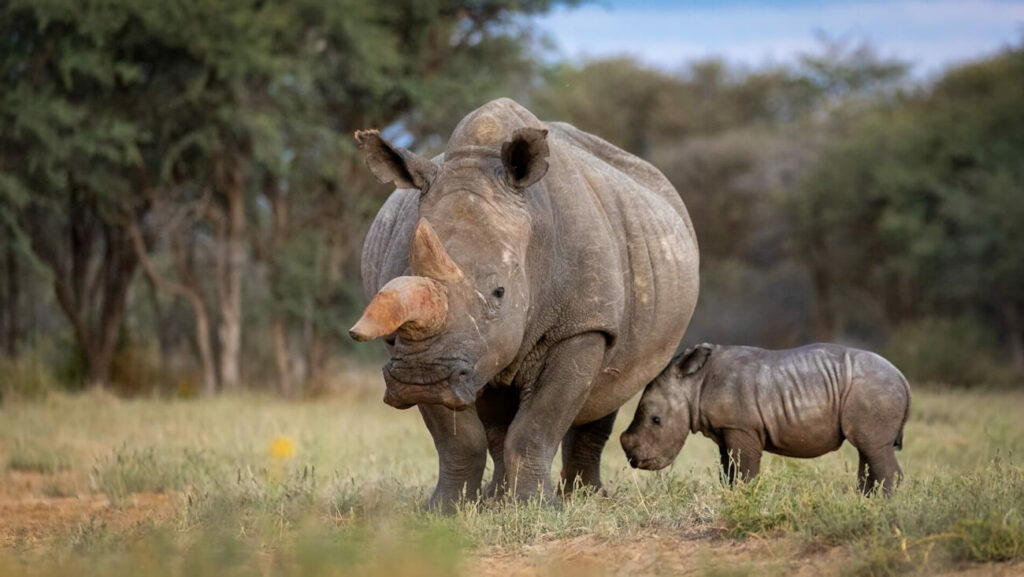
Volunteer White Rhino cow with her calf seen at Khamab Kalahari Reserve
Threats and Conservation: A Fight for Their Future
The biggest threat to white rhinos is relentless poaching for their horns. These horns, made of keratin (the same as our nails!), are erroneously believed to have medicinal properties and are used as status symbols. This illegal trade has devastated their populations. Habitat loss, fragmentation, and human-wildlife conflict also pose serious dangers. Dedicated conservation efforts, including protected areas, anti-poaching patrols, rhino relocation programs, and community education, are crucial to secure their future.
FAQs: Your White Rhino Questions Answered
The Kalahari Connection
While the Kalahari Desert might seem like an unlikely rhino habitat, white rhinos are surprisingly adaptable. They can be found along the Molopo River during the wet season, taking advantage of the lush vegetation and water sources.
A Remarkable Symbiosis: Rhinos and Birds
White rhinos often have feathered companions – cattle egrets! These birds benefit from the rhino’s foraging, catching disturbed insects and even removing pesky parasites. The rhino, in turn, gains extra eyes watching for danger and benefits from having parasites removed. A classic example of mutualism!
Remember: Every Choice Matters for White Rhinos!
By learning about these amazing creatures, supporting conservation efforts, and making responsible choices, we can all play a part in ensuring a future where white rhinos continue to roam the African landscapes.
Want to see White Rhinos for yourself? Our Project let’s you join a Kalahari Safari to help African Wildlife or Contact Us for any other questions or read our Testimonials!
Learn more about the White Rhinoceros here.
